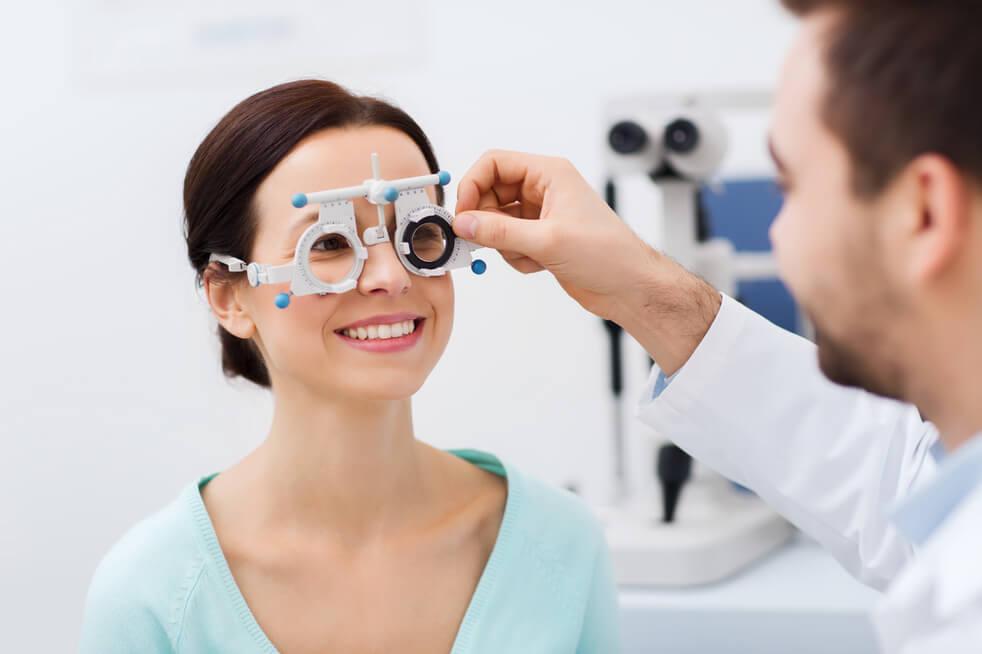In mid to late adulthood, nearly everyone experiences symptoms of blurred vision or difficulty focusing while looking at things up close. This is a completely normal visual change known as presbyopia. Presbyopia usually starts sometime in your 40’s, when you first notice that you have to hold things far away in order to get them in focus. It becomes more difficult to read, and your eyes may get tired quickly. While this condition usually comes with frustration and embarrassment, it is a completely natural process that everyone experiences. Luckily, there are many different options to help address the visual struggles caused by presbyopia such as reading glasses as more.

The Cause of Presbyopia
The focusing system of the eye includes a clear lens inside of the eye, and a muscle that helps control the shape and size of this lens. When we are young, the focusing system is strong and flexible, which allows the eyes to easily view objects at a wide range of distances with no difficulties. Once we reach adulthood, changes slowly begin occurring to both the lens and the muscle that controls it, making the focusing system more rigid and less effective. When the optical system is no longer able to easily focus on objects up close, we begin to notice symptoms of presbyopia.
The onset of presbyopia may not be very noticeable at first. Many people can compensate by holding objects further away, which places less of a demand on the focusing system. People who are nearsighted may find that it is easier to see things up close if they remove their glasses. As time goes on and the focusing system becomes less and less effective, these adaptive strategies may no longer do the trick. When this is the case, there are many other corrective options that can help improve near vision in presbyopia.
Reading Glasses: Living with Presbyopia
Unfortunately, there is no “cure” for presbyopia, and there is no way to regain strength of the focusing system as we age. However, there are many different strategies to see clearly while reading. Over-the-counter reading glasses, commonly called “cheaters,” are an easy option for those people who do not need glasses for distance and only need help reading after presbyopia hits. However, putting on and taking off reading glasses frequently can be frustrating. Bifocals are an effective option for corrective lenses that can be worn all the time and provide clear vision at multiple distances. In traditional lined bifocals, the top of the lens contains a distance prescription, and the bottom of the portion holds a near prescription for reading and other near tasks. Another similar option is progressive “no-line” bifocals, which contain a distance prescription at the top, an “intermediate” or computer prescription is in the middle of the lens, and the reading prescription at the bottom of the lens. Progressive lenses are popular because they provide a wide range of viewing distances without a distracting line on the lenses.
If prescription glasses or reading glasses are not an ideal corrective option for you, there are several contact lens options. We’ve discussed how multifocal or monovision contact lenses can be worn to provide clear vision up-close for those who are experiencing presbyopia.
Presbyopia should not be something that is feared or dreaded. Remember that it is a completely normal process, and there are many options to help you see more clearly up close! If you are struggling to find the best corrective approach for your near vision, ask your optometrist for recommendations.

0 Comments